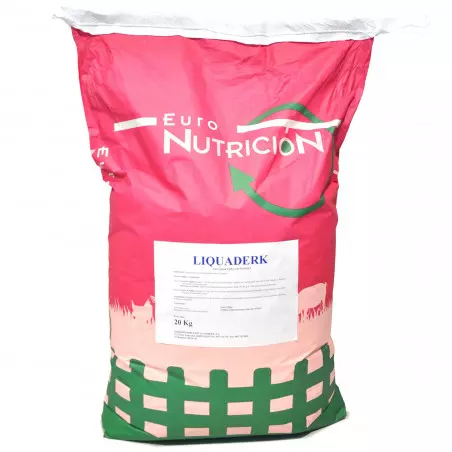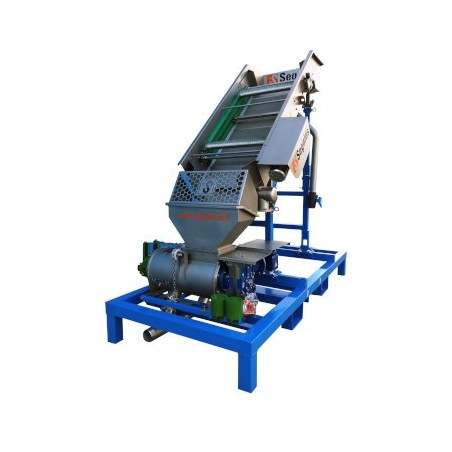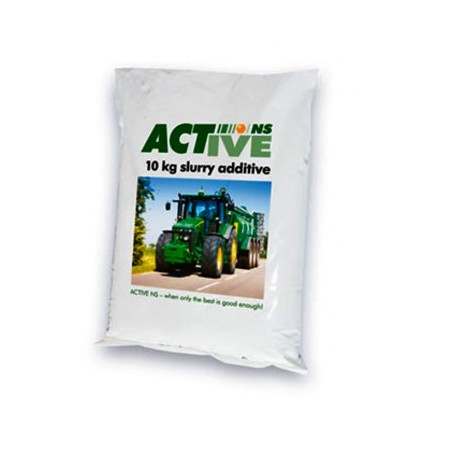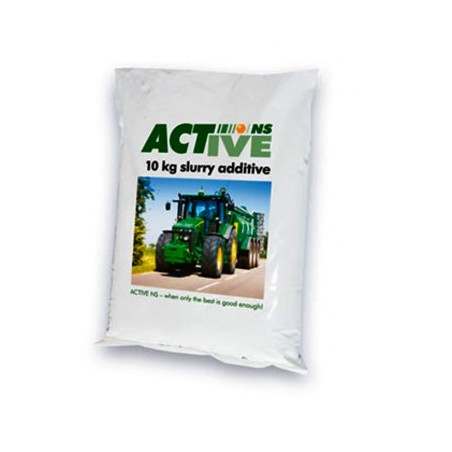These strategies are practically the same as those based on biogas, with the difference being that anaerobic digestion is not added in the chain of combined processes and, therefore, these strategies not take advantage of the benefits that digestion provides, although they have the characteristic of a higher organic matter content in the recovered effluents.
The simplest system consists of a solid/liquid separation, with the export of the solid fraction. A high yield is only achieved if the separation is carried out within a few hours after excretion of the slurry. If this does not meet the nutrient export objectives, separation and/or filtration units must be added, of which two general diagrams are shown below, in order of complexity.

Solid/liquid separation with the use of flocculants for export of solid fractions, composted or not

Figure 1. Diagram of a solid/liquid separation chain, for export of the solid fraction, composted or not.
In a preliminary separation, coagulants or flocculants can be used to improve yield. An initial separation followed by a separation with flocculants is most common in order to separate colloidal particles. If the density of the colloidal particles is not high enough, they are separated by flotation with the addition of small air bubbles. The separated solid material is dehydrated by a belt press or press, to obtain a liquid effluent for fertilization and a solid fraction that is combined with the solid fraction of the first separator to be exported.
Since there has been no destruction of organic matter, it is recommended that the solid fraction be composted in order to stabilize it.
Solid/liquid separation, with the use of flocculants, and membrane filtration to obtain a solid fraction and a concentrate for export.
The liquid effluent in Figure 1 still contains a high concentration of ammoniacal nitrogen, as well as suspended particles and salinity. Concentration by means of membranes makes it possible to obtain a nutrient concentrate and a permeate suitable for irrigation water (Figure 2).

Figure 2. Diagram of a solid/liquid separation and concentration chain using membranes, to export the solid fraction, composted or not, and the concentrate.
Membrane filtration processes consist of the separation of particles from a liquid effluent based on their size or salinity by means of semi-permeable membranes. Of the different types of membrane processes, only reverse osmosis can concentrate salts; the others (microfiltration, ultrafiltration, nanofiltration) can only separate particles or molecules of high molecular weight. Reverse osmosis consists of reversing the osmotic flow of water (which would go from a dilute medium to a more concentrated medium) through a semi-permeable membrane by applying pressure, obtaining a permeate (dilute phase) and a concentrate. To avoid dirtying, S/L separation and filtration systems must be applied prior to the process; therefore, a microfiltration unit has been added in Figure 2. Reverse osmosis (see Figure 3) can concentrate more than 99% of the salts, but small non-ionized molecules, such as ammonia, can pass through the membrane, so the water obtained as permeate is not completely clean. The appeal of the system lies in being able to gain value from the concentrates obtained.
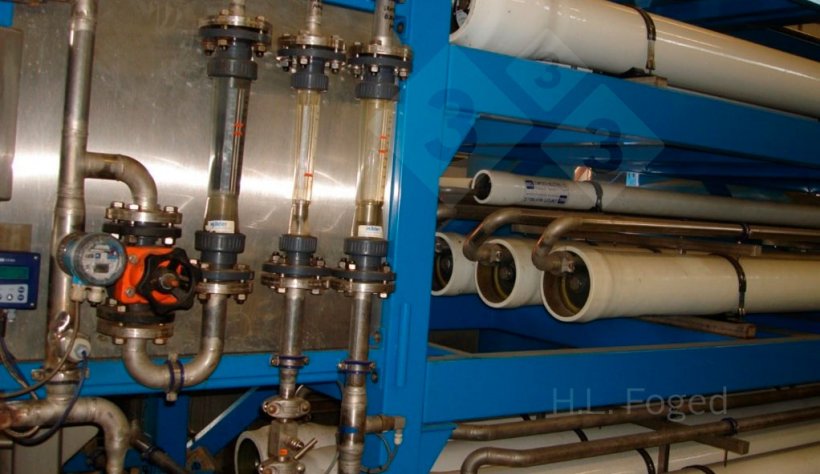
Figure 3. Detail of a reverse osmosis unit in a plant following the layout shown in Figure 2.
Foged et al. (2012) describe such a facility in the Netherlands, where the total nitrogen in the treated slurry is 45.4% recovered in the solid fraction and 53.8% recovered in the reverse osmosis concentrate. The remainder is contained in the permeate (water for irrigation), basically in the form of ammoniacal nitrogen. The system is complemented by an ion exchange system that treats the permeate so that it has practically zero salinity. Other variants of these systems include other processes, such as adsorption.
These systems have a very high investment and operating cost, which can only be justified by obtaining products (solid fraction and nutrient concentrate) that have value in the fertilizer market.
I want to know more about S/L separation systems 
I want to learn more about composting 

Could solar drying reduce the moisture of the solid fraction? 
Return to the nutrient surplus situation to study other technological strategies 





